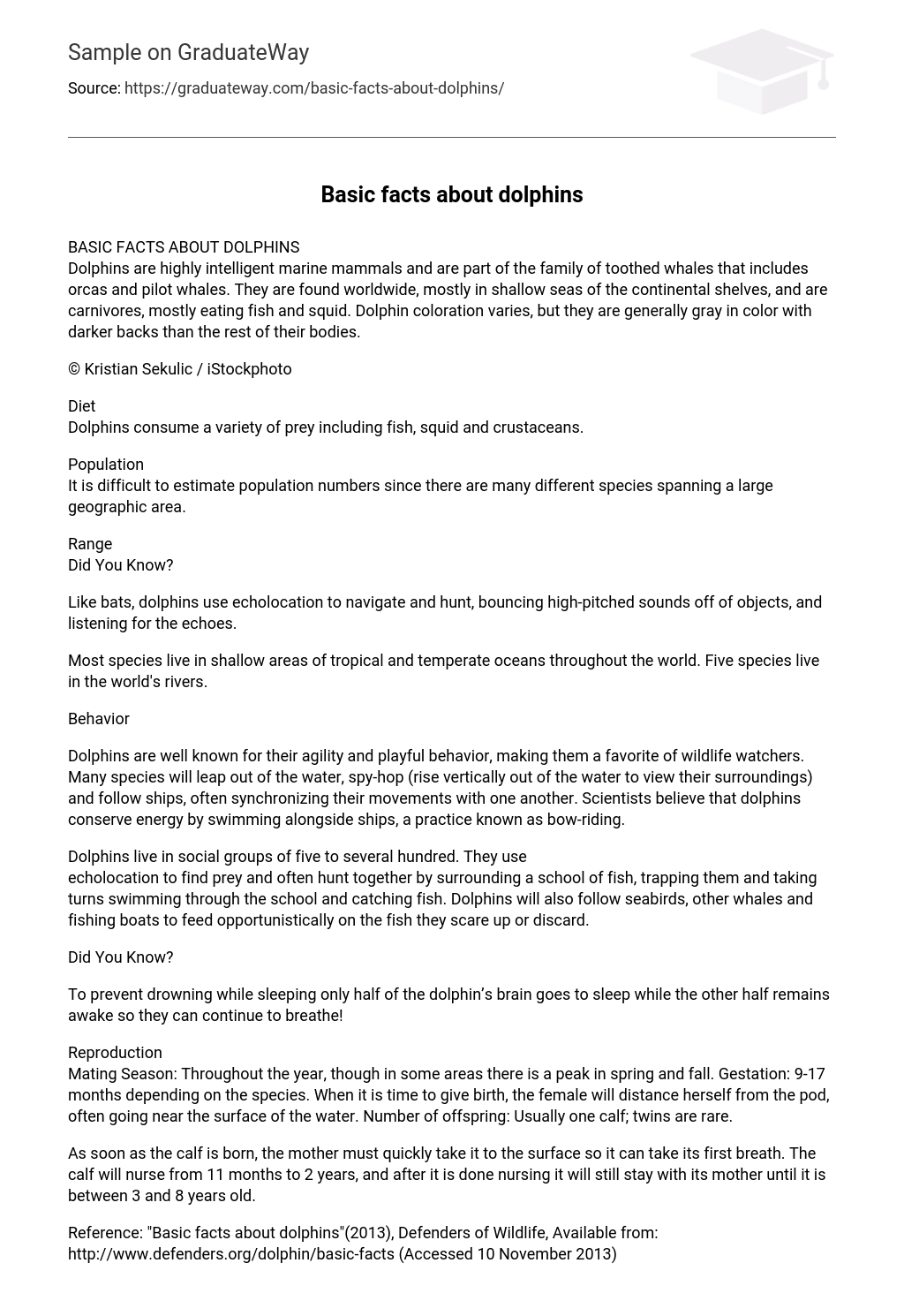Dolphins are highly intelligent marine mammals and are part of the family of toothed whales that includes orcas and pilot whales. They are found worldwide, mostly in shallow seas of the continental shelves, and are carnivores, mostly eating fish and squid. Dolphin coloration varies, but they are generally gray in color with darker backs than the rest of their bodies.
- Diet. Dolphins consume a variety of prey including fish, squid and crustaceans.
- Population. It is difficult to estimate population numbers since there are many different species spanning a large geographic area.
- Like bats, dolphins use echolocation to navigate and hunt, bouncing high-pitched sounds off of objects, and listening for the echoes.
- Most species live in shallow areas of tropical and temperate oceans throughout the world. Five species live in the world’s rivers.
- Behavior. Dolphins are well known for their agility and playful behavior, making them a favorite of wildlife watchers. Many species will leap out of the water, spy-hop (rise vertically out of the water to view their surroundings) and follow ships, often synchronizing their movements with one another. Scientists believe that dolphins conserve energy by swimming alongside ships, a practice known as bow-riding.
- Dolphins live in social groups of five to several hundred. They use echolocation to find prey and often hunt together by surrounding a school of fish, trapping them and taking turns swimming through the school and catching fish. Dolphins will also follow seabirds, other whales and fishing boats to feed opportunistically on the fish they scare up or discard.
- To prevent drowning while sleeping only half of the dolphin’s brain goes to sleep while the other half remains awake so they can continue to breathe!
- Mating Season: Throughout the year, though in some areas there is a peak in spring and fall.
- Gestation: 9-17 months depending on the species. When it is time to give birth, the female will distance herself from the pod, often going near the surface of the water. Number of offspring: Usually one calf; twins are rare. As soon as the calf is born, the mother must quickly take it to the surface so it can take its first breath. The calf will nurse from 11 months to 2 years, and after it is done nursing it will still stay with its mother until it is between 3 and 8 years old.
Reference
- “Basic facts about dolphins”(2013), Defenders of Wildlife, Available from: http://www.defenders.org/dolphin/basic-facts (Accessed 10 November 2013)





